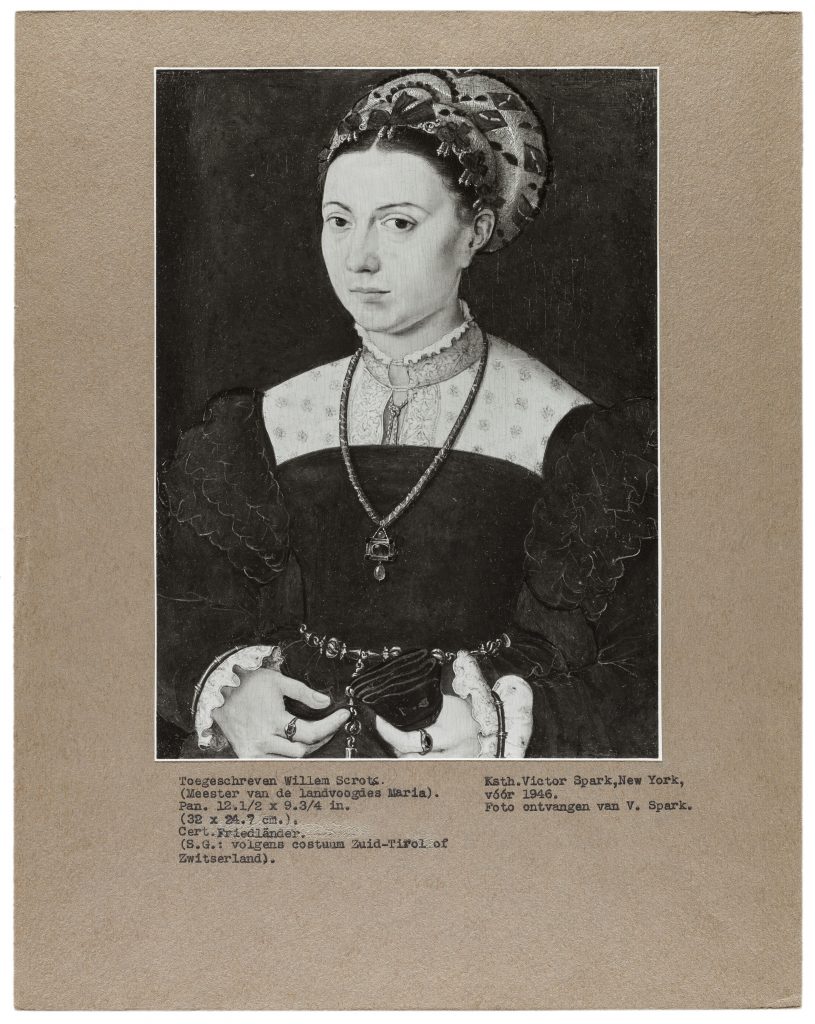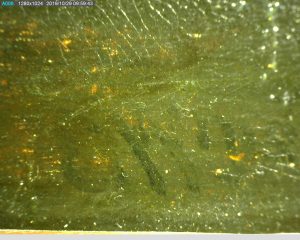When a work is not signed, an artwork may be attributed to an artist based on stylistic similarities to other known works. This process, referred to as “connoisseurship,” was once the main method of art historical inquiry. Over time, however, such reliance on the “eye” of experts has been criticized as too subjective. Questions regarding authorship surround several unsigned works in this exhibition, such as a drawing that is currently assigned to the Dutch artist Pieter de Neyn (1597–1639).
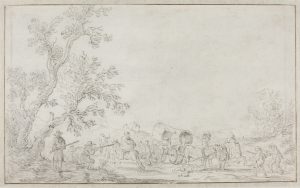
A moonlit landscape that came to the Picker in 1966 has long been attributed to the Dutch painter Aert van der Neer (c. 1603–1677). An artist’s monogram in the bottom right corner of the painting has in the past been interpreted as being Van der Neer’s. But experts have disputed this attribution since at least 1985.
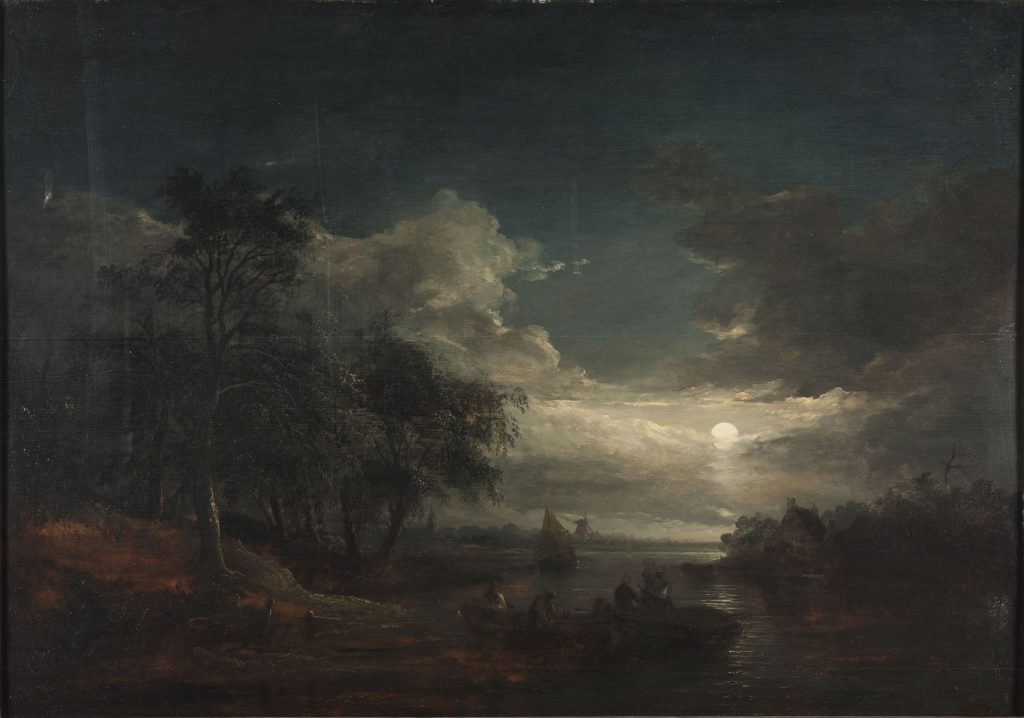
Materials from the Picker’s collection archive demonstrate the history of the authenticity questions surrounding River Landscape by Moonlight. The attribution of this painting to Aert van der Neer dates back to at least 1957, when Herbert Mayer ’29 (1908–1991) acquired the work from its previous owner.
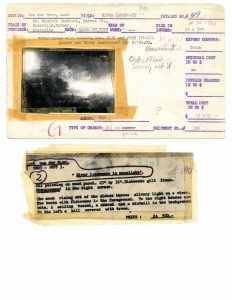
An undated memo expressing doubts about its authenticity, possibly authored by esteemed conservator Caroline Keck (1908–2007), is the first trace in the Picker’s archive of a different opinion about Moonlight‘s authorship.
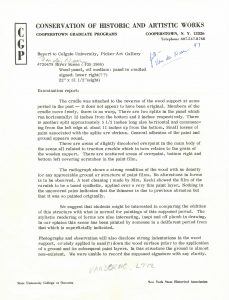
Former Picker Art Gallery director, Dewey Mosby (1942–2012), discussed a possible publication regarding the painting with Dutch art specialist and former curator of the National Gallery in Washington D.C., Arthur Wheelock, Jr. (b. 1943). As far as we know, however, Wheelock did not write about the work.
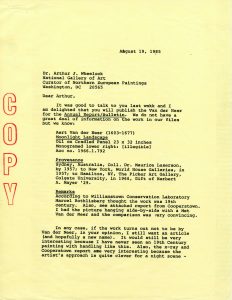
In his essay, Anthony F. Janson (b. 1943), is strongly in favor of attributing the painting to Aert van der Neer, and disagrees with the suspicions regarding the work’s relative modernity as expressed by conservators such as Keck. Pigment analysis conducted recently, however, has determined that the work does in fact date to a later period.
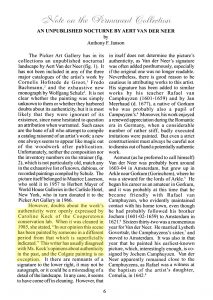
The artist responsible for a portrait of a mysterious lady in red remains unknown, but in the early twentieth century this work was attributed to an unidentified artist known as the Master of the Regent Maria. This pseudonym was first used by art historian Max J. Friedländer (1867–1958), who later proposed this could be William Scrots (active 1537–1551), a Flemish artist who worked both for Mary of Hungary (1505–1558) in Brussels and the Tudor court in London.
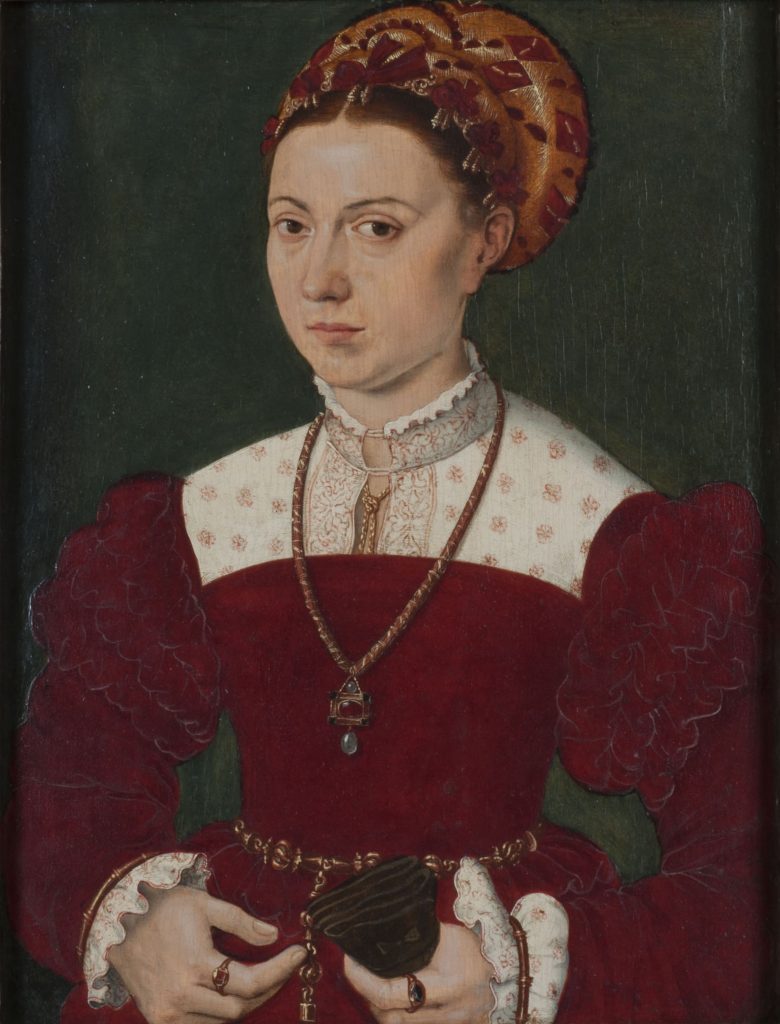
The caption below an image from the photo documentation archive in the Netherlands Institute for Art History (RKD) indicates that at one point Portrait of a Woman was accompanied by an authentication certificate from Friedländer. Former director of the RKD, Sturla Gudlaugsson (1913–1971; referred to as “S.G.”) interpreted her dress as Swiss or southern-Tyrolean.
When a work is not signed, an artwork may be attributed to an artist based on stylistic similarities to other known works. This process, referred to as “connoisseurship,” was once the main method of art historical inquiry. Over time, however, such reliance on the “eye” of experts has been criticized as too subjective. Questions regarding authorship surround several unsigned works in this exhibition, such as a drawing that is currently assigned to the Dutch artist Pieter de Neyn (1597–1639).
A moonlit landscape that came to the Picker in 1966 has long been attributed to the Dutch painter Aert van der Neer (c. 1603–1677). An artist’s monogram in the bottom right corner of the painting has in the past been interpreted as being Van der Neer’s. But experts have disputed this attribution since at least 1985.
Materials from the Picker’s collection archive demonstrate the history of the authenticity questions surrounding River Landscape by Moonlight. The attribution of this painting to Aert van der Neer dates back to at least 1957, when Herbert Mayer ’29 (1908–1991) acquired the work from its previous owner. An undated memo expressing doubts about its authenticity, possibly authored by esteemed conservator Caroline Keck (1908–2007), is the first trace in the Picker’s archive of a different opinion about Moonlight‘s authorship.
Former Picker Art Gallery director, Dewey Mosby (1942–2012), discussed a possible publication regarding the painting with Dutch art specialist and former curator of the National Gallery in Washington D.C., Arthur Wheelock, Jr. (b. 1943). As far as we know, however, Wheelock did not write about the work.
In his essay, Anthony F. Janson (b. 1943), is strongly in favor of attributing the painting to Aert van der Neer, and disagrees with the suspicions regarding the work’s relative modernity as expressed by conservators such as Keck. Pigment analysis conducted recently, however, has determined that the work does in fact date to a later period.
The artist responsible for a portrait of a mysterious lady in red remains unknown, but in the early twentieth century this work was attributed to an unidentified artist known as the Master of the Regent Maria. This pseudonym was first used by art historian Max J. Friedländer (1867–1958), who later proposed this could be William Scrots (active 1537–1551), a Flemish artist who worked both for Mary of Hungary (1505–1558) in Brussels and the Tudor court in London.
The caption below an image from the photo documentation archive in the Netherlands Institute for Art History (RKD) indicates that at one point Portrait of a Woman was accompanied by an authentication certificate from Friedländer. Former director of the RKD, Sturla Gudlaugsson (1913–1971; referred to as “S.G.”) interpreted her dress as Swiss or southern-Tyrolean.
